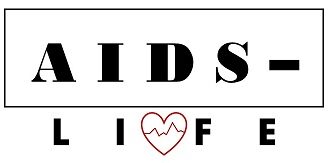Prevention of HIV infection: basics and recommendations for HIV prevention
HIV infection is a chronic disease that is characterized by damage to the body's immune system and the subsequent development of severe immunodeficiency conditions, leading to secondary infections, malignancies and autoimmune processes.
Characteristics of the disease
The human immunodeficiency virus is part of the retrovirus family. The source of infection is an infected patient who is in the asymptomatic stage or the stage of a developed clinical picture.
The incubation period lasts about one month.
- The highest concentration of the virus is observed in the blood, seminal fluid, vaginal secretions, cerebrospinal fluid, cervical mucus, and breast milk.
- Small amounts of the virus are present in saliva, urine, and tear secretions, but this concentration is not enough for infection.
Routes of infection
The human immunodeficiency virus is transmitted parenterally, that is, when infected blood directly enters the bloodstream of a healthy person (for example, through cuts, syringe injections, etc.), as well as through sexual contact.
- With the contact-sexual method of infection, the virus enters the body through damaged skin and mucous membranes (due to good blood supply, various components and substances are well absorbed through them). The virus cannot enter the body through intact skin.
- The sexual route of infection is observed during sexual intercourse: both heterosexual and homosexual. It is associated with the presence of microtraumas on the mucous membranes, which are often observed during oral and anal sex, as well as during inflammatory processes of the genital organs.
- During parenteral infection, the virus penetrates directly into the bloodstream - this route occurs during transfusion of infected blood and its components, injections with contaminated instruments, and organ transplantation. Injecting drug addicts who use the same contaminated syringe are most often infected.
Children are often infected in utero during an infected woman's pregnancy or during labor. It should be noted that the disease develops only in 30% of children born to a sick mother. The risk of infection increases with natural childbirth, contact with the mother's blood, and the presence of the stage of acquired immunodeficiency (AIDS). A baby can also become infected while breastfeeding.
Who is most often infected: risk groups
Susceptibility to the disease is universal. Today, drug addicts who use the same contaminated needles to inject drugs are most susceptible to infection.
The following groups are also at high risk of infection:
- persons who support homosexual relationships;
- persons who prefer oral and anal sex;
- prostitutes;
- people who often change sexual partners;
- recipients of donated blood and organs;
- children born from infected mothers;
- healthcare workers who frequently come into contact with blood and other body fluids.
Stages of the disease
In total, there are five stages of disease development.
The first stage is the incubation period
This stage lasts from two to eight weeks. There are no symptoms during this period, but the infected person is already a source of spread of the virus. Antibodies to the virus have not yet been detected in the blood.
Manifest period (acute)
In half of infected people, the disease begins to manifest itself with nonspecific symptoms, which include:
- increased body temperature;
- muscle pain;
- joint pain;
- enlarged lymph nodes;
- nausea, vomiting, diarrhea;
- skin rash, etc.
Some patients are asymptomatic during this stage. Using a special laboratory analysis, the virus is detected in the blood, but antibodies may not yet be detected.
Latent period
The stage lasts several years (from one year to ten years). There are no special symptoms, immunity remains at the same level, but an infected person can become a source of infection. Using special laboratory reactions, antibodies to the virus are detected in the blood.
At the end of this stage, a generalized enlargement of the lymph nodes is observed (that is, almost all lymph nodes are increased in size).
Stage of secondary manifestations (AIDS)
AIDS – acquired immunodeficiency syndrome. This condition is characterized by the addition of fungal, bacterial, viral infections, as well as the development of malignant neoplasms (lymphoma, Kaposi's sarcoma).
Symptoms at this stage include:
- temperature increase;
- night sweats;
- weakness, fatigue;
- severe weight loss, exhaustion;
- diarrhea;
- enlargement of all lymph nodes;
- neurological disorders;
- liver enlargement;
- the addition of secondary infections, the development of pneumonia, fungal infections of internal organs, etc.
Terminal stage
This is the final stage of the disease. The patient's exhaustion progresses, intoxication increases, the course of concomitant diseases worsens, and signs of dementia are noted. The disease ends in the death of the patient.
Prevention of HIV infection
At present, effective methods for preventing HIV infection have not been developed, i.e., specific means of protection (vaccines) have not been developed.
Prevention of HIV infection consists of the following activities:
- adherence to protected sex;
- fight against drug addiction;
- sanitary educational work;
- compliance with sanitary and epidemic regulations in hospitals and clinics;
- early detection of infected persons;
- control of tissues and organs for transplantation;
- thorough examination of donors, etc.
The primary role is played by the extent to which each person himself complies with HIV prevention measures.
Contraception as a way to prevent infection
Prevention of AIDS and HIV infection lies in the correct sexual behavior of the population. The most effective method of preventing HIV infection is the use of membrane contraceptives (condoms). The effectiveness of the method increases when used together with spermicidal agents.
It should be noted that according to the document on the prevention of HIV infection, failure to comply with the rules for preventing HIV infection by infected persons entails criminal liability.
Post-exposure prophylaxis
Post-exposure prophylaxis of HIV infection involves taking antiretroviral drugs as soon as possible after contact with an infected biological fluid, i.e. immediately after identifying the risk of infection.
These products can only be obtained with a prescription. They are taken as early as possible to establish the risk of infection, but no later than three days (72 hours).
If treatment with antiretroviral drugs is well tolerated, the course is continued for another four weeks, taking two or three drugs.
Measures to prevent HIV infection are mandatory for all medical workers who are faced with the risk of infection. The medical worker begins taking the drug within the next few hours after identifying an emergency case.
The most common risks associated with needlesticks occur when a healthcare worker accidentally punctures a glove or is scratched by a needle containing droplets of infected blood. Antiretroviral drugs reduce the possibility of infection in the workplace by 79%. However, there are still cases where health care workers who took antiretroviral drugs became infected with HIV.
In 2005, the basics of HIV prevention were revised. Specialists at the Center for Disease Control have agreed that antiretroviral drugs should be available not only for infections in the workplace, but also in other cases (for example, during sexual intercourse).
The following information is available on the topic of post-exposure prophylaxis for HIV infection:
- there are no studies showing that post-exposure measures to prevent HIV infection work in the event of non-occupational risks;
- post-exposure prophylaxis for the spread of HIV infection is a program that includes several drugs that are taken throughout the day for a month;
- To achieve the best result, you should take all doses of the drug; skipping a dose can contribute to the development of infection and the emergence of drug resistance;
- Antiretroviral drugs cause severe side effects.
Recommendations for the prevention of HIV infection include rules for taking antiretroviral drugs. Taking pills begins as soon as possible after an emergency.
It is recommended to take three drugs simultaneously; for less serious risks, emergency prevention of HIV infection is carried out with two drugs.
The most pronounced side effect is general malaise and nausea. Other reactions to HIV post-exposure prophylaxis medications include headache, weakness, diarrhea and vomiting. More information can be found in the HIV prevention leaflet.
Anti-epidemic measures
Current trends in HIV prevention include the following areas:
- use of disposable instruments;
- thorough disinfection of reusable instruments;
- use of protective gloves by medical workers when in contact with blood and other biological fluids.
Measures for the epidemiology and prevention of HIV infection are similar to measures for the prevention of parenteral hepatitis and HIV infection, i.e., the same anti-epidemic regime is observed as for hepatitis B.
Persons who are infected or suspected of having an infection are placed in separate boxed rooms. Prevention of the spread of HIV infection is that medical workers must enter the patient’s room only wearing a mask; drawing blood and other biomaterials is done while wearing gloves.
In order to prevent HIV infection and AIDS, the patient's underwear and bed linen, toothbrushes and other personal hygiene items are boiled for 25 minutes. To prevent HIV infection and viral hepatitis, laundry is soaked for an hour in a three percent chloramine solution before washing.
Prevention of HIV infection is also carried out by storing and removing patient biomaterial in a special metal case and closed container. Before going down the drain, biomaterial is disinfected with sodium hypochloride.
Before destruction, dressings are rendered harmless with disinfectant solutions or by boiling. Instruments, probes, catheters, rubber products are immersed for 15 minutes in a washing solution heated to 50 degrees.
Medical workers in contact with patients, as well as laboratory workers examining infected biomaterial, are tested annually for HIV infection.
Perinatal prevention
Prevention of perinatal transmission of HIV infection is carried out from 14-34 weeks of pregnancy. From this period until childbirth, the woman is prescribed azidothymidine 100 mg up to five times a day.
During labor, the drug is administered intravenously (2 mg per kg of body weight in the first hour and 1 mg per kg per hour until the birth of the child).
Perinatal prevention of HIV infection requires delivery by cesarean section. An infected woman should not breastfeed her baby.
Prevention of HIV infection in children born from a sick mother involves taking medications from 8-12 hours after birth and for the next six weeks. Azidotimidine is given in syrup at a dose of 2 mg per kg body weight every six hours.
How else to prevent HIV infection during pregnancy: from 14 weeks, a woman is given the following drugs to prevent HIV infection: saquinavir, azidothymidine and lamivudine. This scheme is a more effective type of prevention of HIV infection during the perinatal period.
According to regulatory documents on the prevention of HIV infection, in order to prevent infection of children, routine examinations of pregnant women for the virus should be carried out. If a woman is diagnosed with HIV infection, prevention of the human immunodeficiency virus is carried out from 14 weeks, which significantly reduces the risk of infection of the child.
Thus, in short, the prevention of AIDS and HIV infection consists of using barrier contraceptives during sexual intercourse, choosing one sexual partner, and avoiding injecting drugs. Sanitary and hygienic education of the population on the topic of HIV prevention is important, in which the paramedic plays an important role along with other medical workers.




